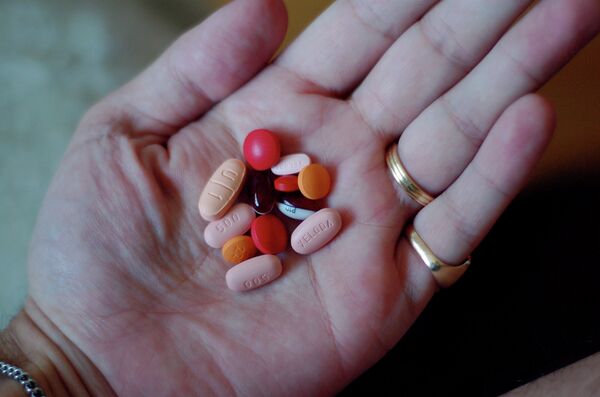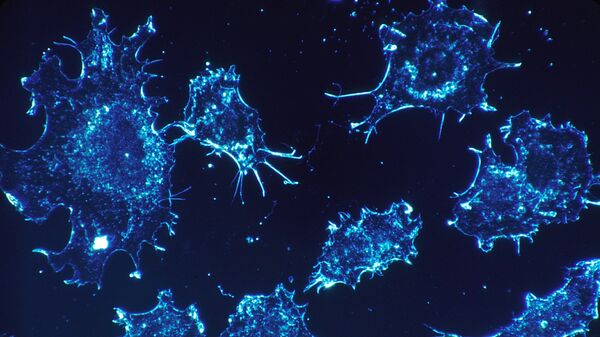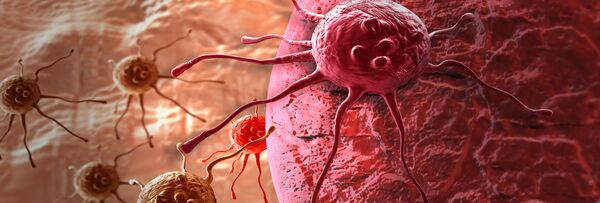According to NRNU MEPhI specialists, photodynamic therapy (PDT) is one of the most effective and safe cancer treatment methods. It's widely used to combat malignant tumours of the skin, oropharynx, liver, lungs, brain, urinary bladder, and GIT organs.
PDT is based on using photosensitisers, substances that increase biological tissues’ photosensitivity. At the preparatory stage of therapy, the photosensitiser accumulates in the tumour tissue. By treating the accumulation foci with a laser, reactive oxygen intermediates appear in tumour cells, triggering their necrosis, apoptosis, or stopping the cell cycle and restarting it in a "healthy" mode.
Accuracy Comes First
One of the main problems of PDT cancer treatment is that it's hard to accurately determine the tumour boundaries. Possible inaccuracy can result in the incomplete processing of cancer cells, leading to a relapse.
To solve this problem, NRNU MEPhI scientists have created a unique endoscopic video fluorescence system that allows photosensitiser accumulation foci to be visualised in hard-to-reach areas in head and neck cancer.
The system is unique because it helps determine the boundaries of neoplasms, where the photosensitiser is accumulated, as well as quantify its concentrations in the tissues during an operation, the researchers said.
"Accurate determination of tumour boundaries is a decisive factor to effectively treat cancer. This is possible due to intraoperative fluorescence diagnostics, which enhances PDT effectiveness and increases the median survival of head and neck cancer patients", Professor Victor Loschenov, Head of the Department of Laser Micro-, Nano- and Biotechnologies at NRNU MEPhI explained.
With this method, fluorescence is excited by using a red laser. According to NRNU MEPhI researchers, in the red spectrum, light absorption and scattering in biological tissues are minimal, which increases the depth of penetration and accuracy of analysis.
How to Save the Liver?
The liver is one of the most difficult organs to treat with PDT. As NRNU MEPhI scientists explained, it is through this organ that most photosensitisers are removed from the body and that in any case a patient's liver contains a huge amount of these substances, which greatly complicates the correct identification of pathological cells.
Having analysed the spectral and fluorescent properties of a wild boar's hepatobiliary system tissues, whose optical properties are close to those of humans, NRNU MEPhI specialists developed a new method to quantify the concentration of photosensitisers in bile duct tissues.
"By studying the liver tissues' own fluorescence, we have improved the methods of spectral and video fluorescence diagnostics of malignant tumours developing in this organ. This allowed us to come up with an optimal approach in treating liver cancer with PDT", Kanamat Efendiev, a postgraduate student at the Institute of Engineering Physics for Biomedicine, MEPhI, said.
Taking Care of Your Stomach
Spectral and video fluorescence diagnostics in stomach cancer PDT is another area that NRNU MEPhI researchers are developing. As the scientists emphasised, the use of PDT in this area is especially promising due to the high complexity of the surgical intervention.
A spectroscopic study of gastric mucosa using a new method has made it possible to determine the tumour at a depth of 3-4 mm, which is twice that of analogues, NRNU MEPhI scientists said. The method's key elements are a unique endoscopic video fluorescence system and a 5-ALA photosensitiser.

"The study showed that spectral and video fluorescence analysis with 5-ALA can be used as an express diagnostics method, including early stomach [cancer] diagnosis, as well as to assess the tumour spread and detect carcinomatous foci during laparoscopy", Artem Shiryaev, a researcher at the Levshin Institute of Cluster Oncology, said.
Clinical studies of the new methods were carried out at the Levshin Institute of Cluster Oncology based at the University Clinical Hospital No. 1 of the First Moscow State Medical University. According to the scientists, the PDT and fluorescence diagnostics methods and equipment developed at NRNU MEPhI are already being actively implemented by many Russian hospitals.




